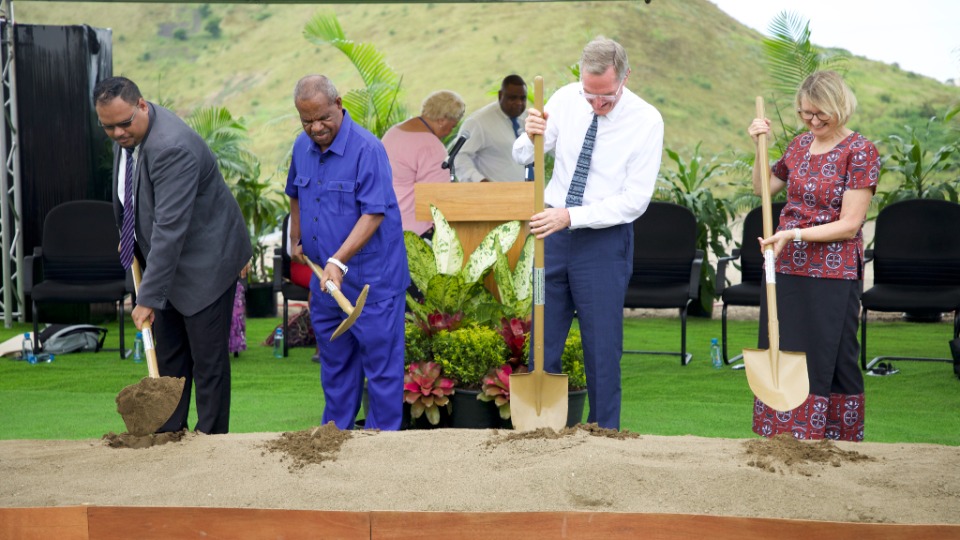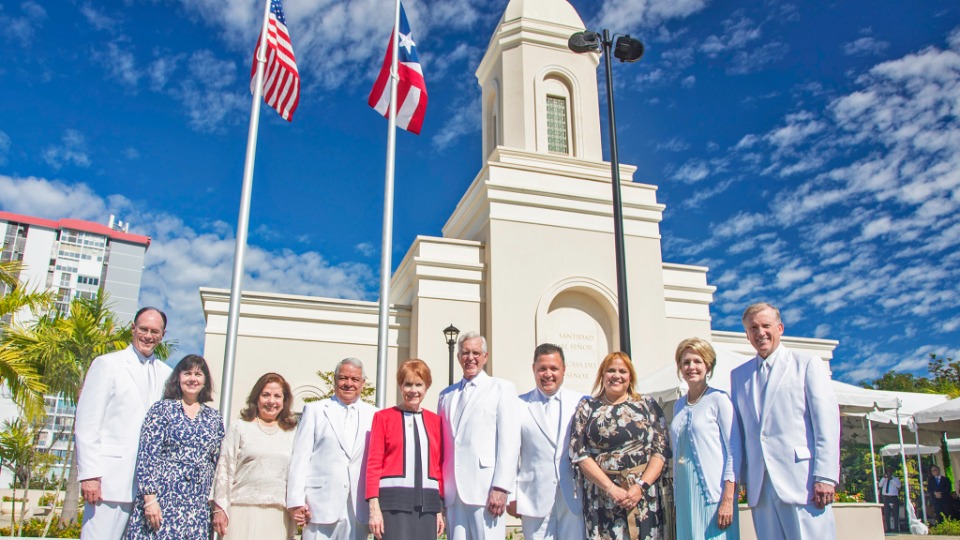Each temple of The Church of Jesus Christ of Latter-day Saints is a house of the Lord. And each is a beautiful building meant to last many years thanks to high-quality materials and rigorous building standards.
The creation of these sacred structures is much like the construction of any other building (leaders identify a need and select a site, and architects design and contractors build). The process is also unique because of the significant role temples play in Latter-day Saint theology.
- Saratoga-Springs-Utah-Temple
- Richmond-Virginia-Temple-Exterior
- St.-George-Temple-May-2023
- Columbus-Ohio-Temple
- Bentonville-Arkansas-Temple
- Helena-Temple-Dedication
- San-Juan-Puerto-Rico-Temple-Dedication
- 588d3a27e2b911ec94adeeeeac1e0a0694f432a0.jpeg
| Temple Square is always beautiful in the springtime. Gardeners work to prepare the ground for General Conference. © 2012 Intellectual Reserve, Inc. All rights reserved. | 1 / 2 |
Funding, Identifying a Need, Selecting a Site
Temples are built using Church funds set aside for that purpose. The Church pays for the costs without a mortgage or other financing.
Church leaders want Latter-day Saints everywhere to have easy access to temples. Temple sites are generally located in areas with enough members (there’s no required number) to warrant construction, or where great distances exist between temples. Public announcements for new temples are usually made by the president of the Church at a general conference.
Once the decision is made to build a temple in a certain area, the First Presidency then prayerfully chooses the precise spot on which to build — a pattern that has been in place since the Church of Jesus Christ’s beginning. For example, soon after entering the Salt Lake Valley in July 1847, Brigham Young identified the block of land on which to build the Salt Lake Temple.
Bill Williams, who has been a Church architect since 2003, says the Church looks for sites “that would have prominence, be in an attractive neighborhood, a neighborhood that would withstand the test of time.”
Design Phase and the Importance of Sustainable Design
After the temple site is selected and the Church determines how large the building will be, a team of architects creates potential exterior and interior designs.
While the purpose of each of the Church’s temples is the same, many aspects of each structure’s inner and outer look and feel are unique, tailored to the local people and area. Williams says good architects “want to create something unique, something that has its own personality, and [Church leaders] allow us to do that” with temples. He adds that much can be done to make a temple unique, including “the decorative motifs, the kind of furniture, the interior accouterments, how articulate it is.”
- BelemBrazil-Temple-Open-House
- Richmond-Virginia-Temple-Grand-Staircase
- Saratoga-Springs-Utah-Temple
- Columbus-Ohio-Temple
- d94ee305de2711ed836deeeeac1e019ddabd6eb7-(1).jpeg
- Praia-Cape-Verde-Temple-Baptistry-2
- a33a2537bcfc11ec8d5aeeeeac1e8a519f0bdfa1-(1).jpeg
- Washington-DC-Temple-Brides-Room
| Temple Square is always beautiful in the springtime. Gardeners work to prepare the ground for General Conference. © 2012 Intellectual Reserve, Inc. All rights reserved. | 1 / 2 |
To create a look and feel that is just right for a specific temple, architects solicit several sources. Williams says his team meets with locals to “understand the nature of the people, the country that they live in, Latter-day Saints that are there and how we can better fit the temple” to them. A critical aspect of the planning process is sustainable design, a concept that Williams says seeks to reduce a temple’s long-term operational cost. “Whatever we can do to make the environmental systems, the mechanical systems energy efficient, to make the interior materials have longevity so that they don’t wear out straightaway, anything we can do to conserve water, it’s great for us as the owner because it makes that long-term cost less. That's what it means to be sustainable.”
And with a temple’s complex systems, sustainability is no easy feat. Thousands of systems and components must work in harmony.
In selecting building materials, the Church settles for nothing but the best. The pattern for this is found in the Bible’s description of Solomon’s Temple in 1 Kings 7. They used the finest materials and workers. The Church of Jesus Christ follows the same pattern.
The role of inspiration is critical to temple design. Design meetings begin with prayer. The design process can take up to two years. All along the way — from architectural detail clear down to colors and carpet swatches — the First Presidency is involved and provides final approvals.

Elder-Peter-F.-Meurs-and-Sister-Maxine-Meurs-join-with-His-Excellency,-Sir-Bob-Dadae,-Governor-General-of-Papua-New-Guinea-and-Tauvasa-Tanuvasa-Chou-Lee,-Solicitor-General,-to-break-ground-for-the-Port-Moresby-Temple.-22-April-2023.
On April 22, 2023, Elder Peter F. Meurs and Sister Maxine Meurs join with His Excellency, Sir Bob Dadae, Governor General of Papua New Guinea and Tauvasa Tanuvasa Chou-Lee, Solicitor General, to break ground for the Port Moresby Temple.© 2023 by Intellectual Reserve, Inc. All rights reserved.Construction
Because of the high standards for building its temples, the Church sends representatives across the world to search out the best contractors. The Church uses many contractors, and the complexity of temple design requires the very best that most workers have ever had to give on a project.
For example, Cory Karl of the Church’s Construction Services Division says that with brick masons, the Church asks “that they lay their brick in a rigorous way such that it’s very uniform and consistent throughout” and thus “installed to the very best of the craftsman's abilities.”
The high building standards are in place for two main reasons: first, Latter-day Saints believe their temples are the holiest places on earth and tributes to God; second, the Church builds these temples to last hundreds of years.
Church representatives ensure the construction companies are financially stable and able to meet Church regulations (including prohibitions against smoking, drinking and loud music on the construction site, though construction workers do not have to be Latter-day Saints). The Church then invites those selected companies to the bidding process. Once a company is chosen, construction typically takes 24 to 48 months, depending on the location.
For temple sites outside the United States, construction can take more time for a variety of reasons. For example, some countries might have more manual labor to do things that in the United States could be done with equipment. Other things can slow down the process, such as additional fees incurred by local governments.
Although it can be a challenge to find qualified contractors, the high bar is worth it for both the Church and the workers. Not only do temple construction projects supply jobs in local communities, they also provide what many construction workers consider to be the zenith of their careers.
Open House and Dedication
Latter-day Saints who live the highest standards of the faith are permitted to enter a dedicated temple. Therefore, once construction is complete, and prior to the temple’s dedication, the Church opens the temple doors to the public for several weeks for free tours. These open houses are a rare opportunity for anyone in the community to walk through a temple and learn more about Latter-day Saint beliefs.
Typically within a week or two after the open house concludes, a Church leader formally dedicates the temple. This is done by offering a dedicatory prayer to consecrate the temple for those sacred purposes for which the temple is built.
